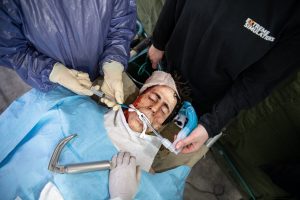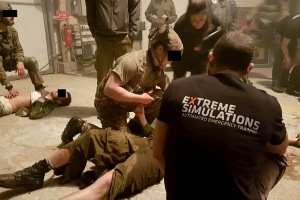Bleeding is the leading cause of preventable death, responsible for about 90% of these cases, while the source of the bleeding in over 10% of the cases leading bleeding to preventable death is the limb (Eastridge & Co.).
Did you know… ? U.S. military reports attribute the saving of about 2,000 lives to the use of tourniquet in the fighting in Iraq and Afghanistan. This makes the tourniquet the most important medical lifesaver on the battlefield.
[This article was translated from Hebrew from the Israel Medical Corps which can be found at this link]
CAT Tourniquets, every fighter’s choice
The choice in the IDF is the CAT, which is carried by every fighter, and on which they receive training in the “Life Savers” course In” 2014 Israel -Gaza conflict”, less than 50% of the CAT applications were made by paramedics and “life-saving” fighters, and the rate failure of the CAT application exceeded 20%.
Failed or incorrect CAT application by warriors occurs in about 80% of cases.
Remember! Immediate application of a tourniquet by a skilled fighter is one of the most important means of reducing preventable death.

Learn about the importance of using realistic mannequins during training and how it can improve your reaction during a real-life event.
How to ensure correct CAT tourniquet application by fighters
Make sure that CAT application training is performed for all fighters at least once a month. Each trainee should practice tourniquet application at least three times, emphasizing the steps for a correct application:
- Position: 10-5 cm from the edge of the wound, aiming to place below (distal) to the joint.
- Strong tightening of the Velcro strap around the limb is the most important step, as failure to fasten the strap is a failure factor
- How to place a CAT tourniquet: The knob must be rotated until it can no longer be rotated (there is no “magic number” of rotations), Make sure it is in the dedicated plastic house. A remote pulse and/or renewal of bleeding should be assessed every 5 minutes.
Important: In case the CAT application is ineffective, an additional CAT should be placed above (proximal) to the existing CAT.

You may also want to read about ways to measure training efficiency.
Book a training for CAT tourniquet application in extreme events
GET IN TOUCH
Contact Extreme Simulations now to book a complete training session





